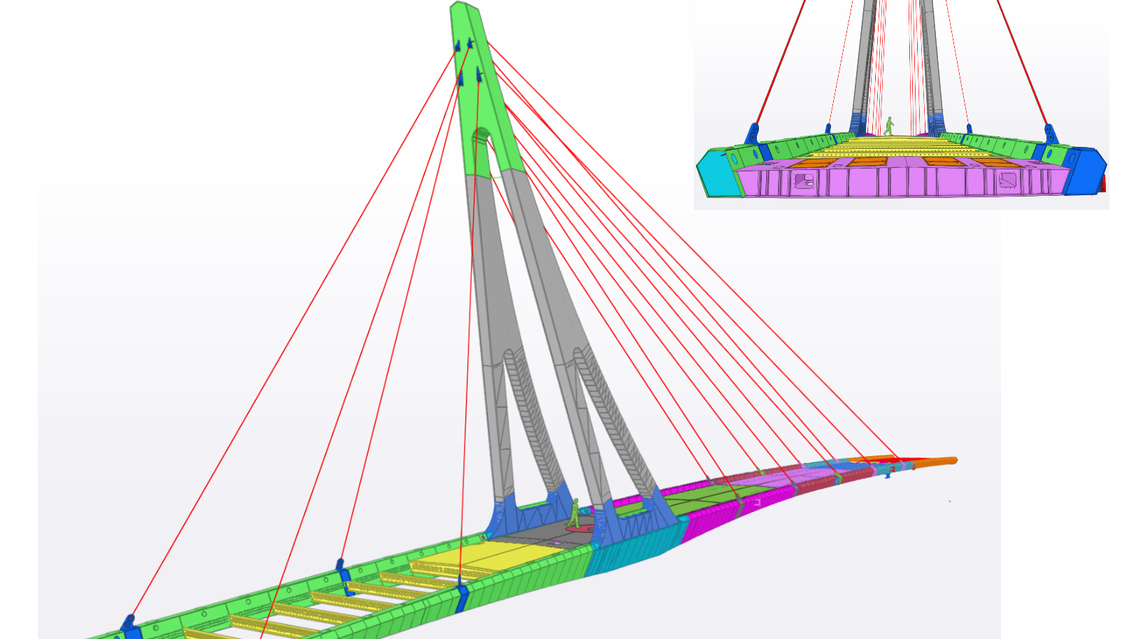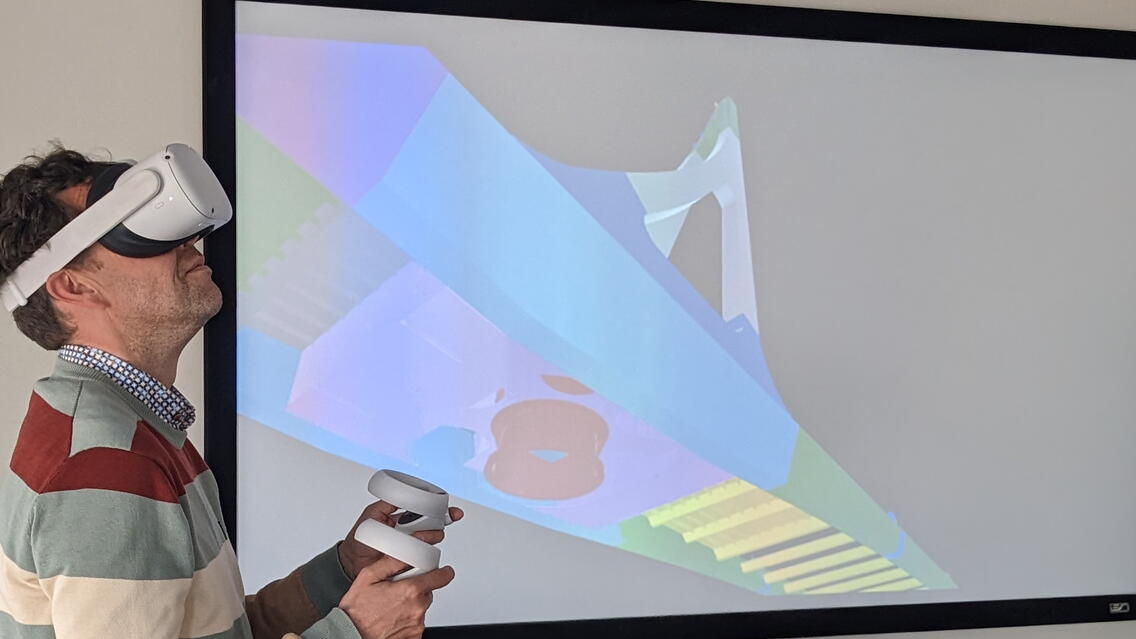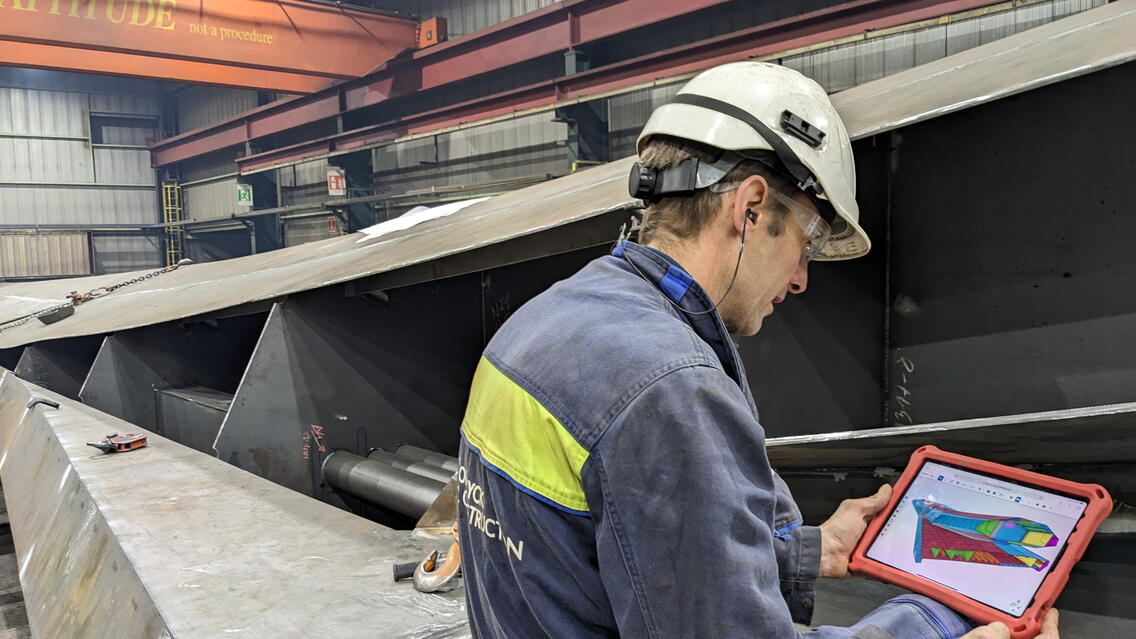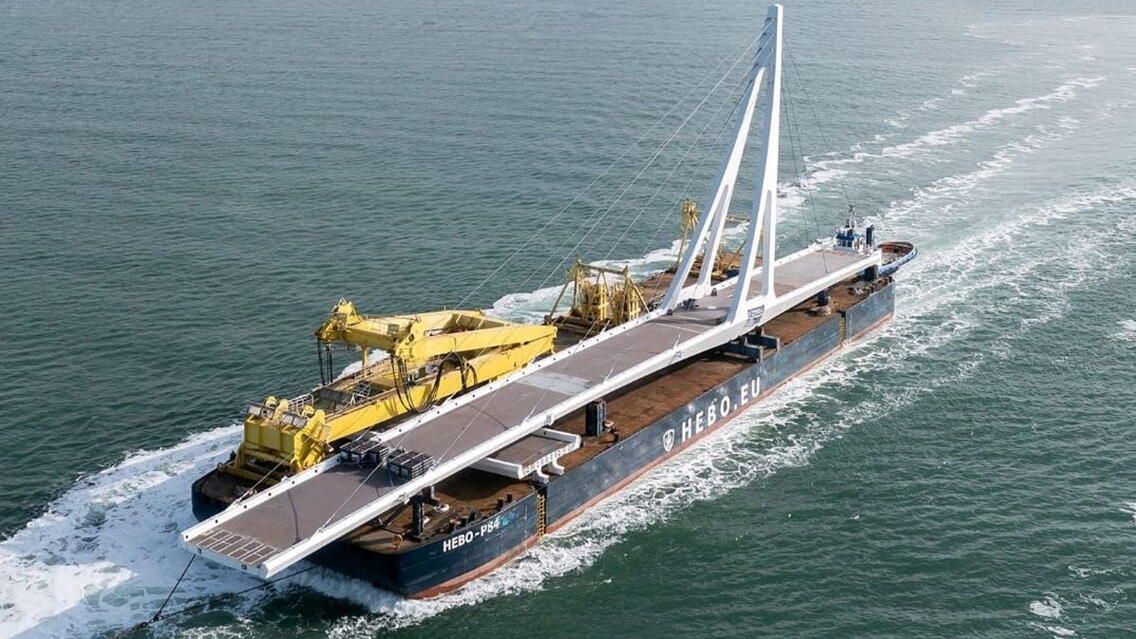This new 110m revolving swing bridge will link pedestrians and cyclists between Govan (south of the River Clyde) and Patrick to the north (next to the Riverside Museum). The design of the pylon is inspired by the historic riverside cranes. It will be one of the largest opening footbridges in Europe.
Farrans is the main contractor for the civil works. Victor Buyck will manufacture, supply and install the steel construction of the bridge (including cables). Demako is responsible for the mechanical parts and movement of the bridge.
The main deck consists of 2 longitudinal girders with a deck plate in between, supported by longitudinal and transverse stiffeners; dimensions 110m x 8.2m.
The use of BIM and collaboration
The delivery of a BIM model is always contractually agreed upon so that clash checks and cooperation with civil or mechanical subcontractors can be checked, thanks to the 3D information.
Innovative use of Tekla Structures
Despite the fact that we use other software packages (Rhino & Grasshopper) to set up the geometry, we also used the “Tekla Live Link” in this project, which made it possible to control slabs directly from Grasshopper in Tekla Structures in real time. The entire project is drawn in Tekla Structures 2020 and provided that some BIM articles are loaded through items or reference models that we obtained from cooperating subcontractors or the customer.
The difficulty in building bridges is that the construction sections are welded together and must connect (weld) to each other within the tolerance of the EN1090-2 standard. In production, measurements are carried out per building part, each with a remaining excess length. These measurements are read out from the Leica measuring instruments via X Y Z coordinates and loaded into Tekla’s Layout Manager in order to determine the overlap, best fit positions and burn-off lengths, which ultimately forms a suitable full bridge.
Manufacturability
For the start of the modeling work and the geometry of this bridge, we used the software packages “Grasshopper” (visual programming) and “Rhino” (visualization of the programming and export of skeleton layers).
We always start with the geometry of the neutral fiber, including construction sheer, combined along a cross-section of the bridge on which the cross-sections are plotted, whether or not vertically or radially on this neutral fiber. If an extra construction sieve is required or would change, this can be done by making a simple adjustment (Grasshopper) of the loaded construction sieve values. Everything hangs nicely together according to a chain and a well-defined order so that a BIM model can be supplied with or without a construction sieve. An extra construction sieve is often required for the fabrication of the steel (stress-free geometry) and concrete. Once placed on the site, with full road surface paving and load, you then arrive at the final geometry in which the construction sieve is no longer necessary.
In our workshops, “Trimble Connect” is used to know which plate position numbers should be inserted where. This gives a better picture than just complex production drawings. Since we add our own user attributes such as freights and item numbers to the IFC export model, it is possible to search for parts in a much more targeted manner and also towards 100% traceability, where which plate should be inserted. An assembly sequence is also always drawn up for each building part in Trimble Connect, from which a film can follow or a step-by-step plan/assembly sequence via the various created views (snapshots). Since last year, VBSC has also been using Virtual Reality (VR glasses Meta Quest) in which the accessibility of the welds or the assembly sequence is mapped out during work preparation or during production.
The intention is to go much further, with the use of the Trimble Connect AR app (Augmented Reality from Construsoft), where we can already observe the bridge in position in our workshops or on the site without it being placed. The many advantages are to be able to estimate the flow of chain to building parts in floor area. To be able to perform a quality check on the position of various elements of e.g. bulkheads and stiffeners before the building part is painted. We also want to be able to check on the site whether the position of the support chairs is correct on which the various construction sections will be supported and subsequently canceled. We look at all this at an early stage in order to avoid surprises. The same with clash checks of railway catenaries or other matters.
Sustainability
In recent years, VBSC has focused on the 17 sustainability goals (sustainable development goals or SDGs) of the United Nations! We are proud to have received the UNITAR certificate from Cifal Flanders and VOKA. This is a nice reward in line with the Flemish Charter for Sustainable Entrepreneurship, which we received earlier. Victor Buyck will continue on the path of sustainability.
Victor Buyck chose to transport the bridge as a whole by pontoon from Westdorpe to Glasgow over the sea in this project and to reduce the number of transport movements.





